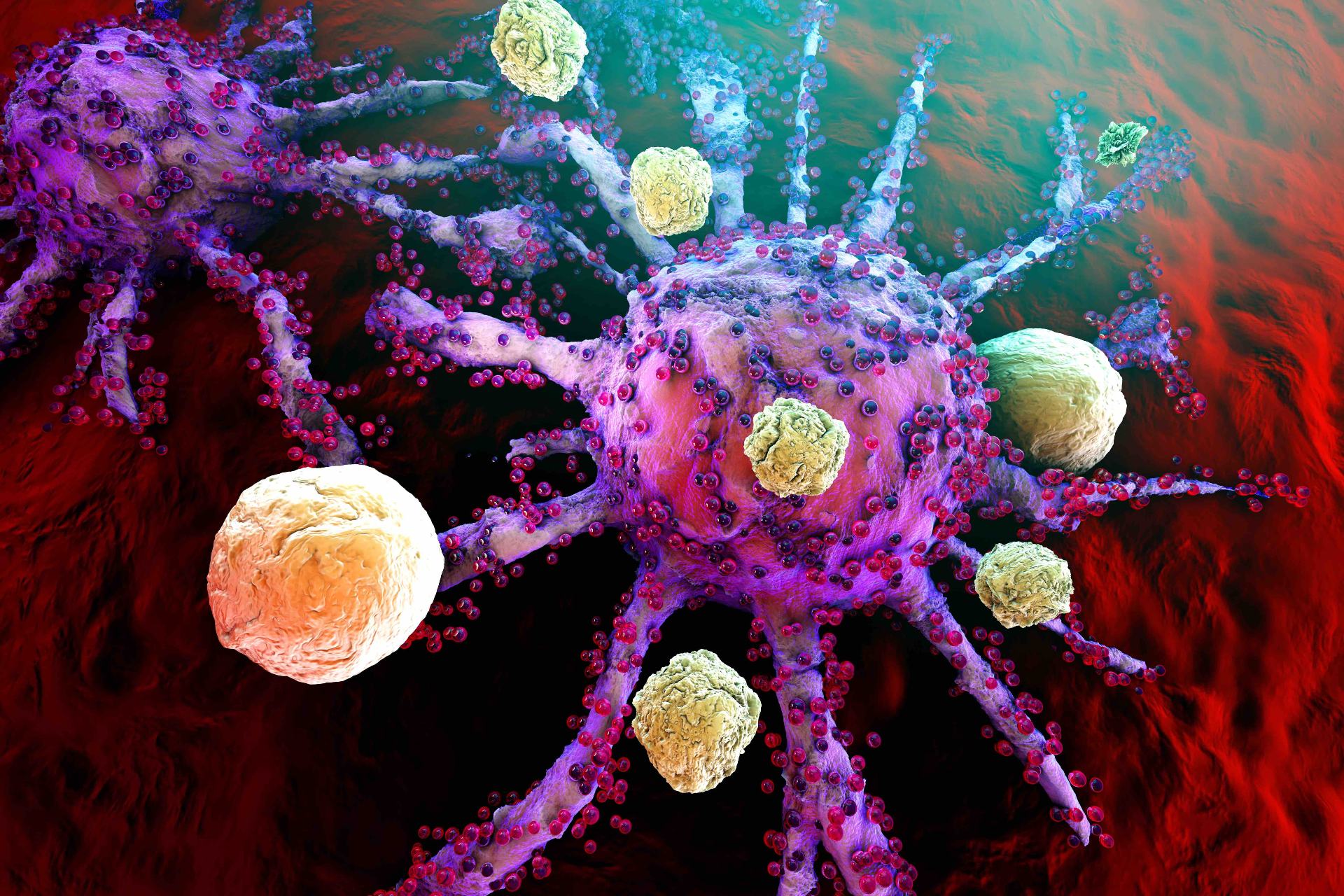Article
Data Show Fixed-Dose Daunorubicin Plus Cytarabine Leads to Fewer Inpatient Days for Patients With sAML
Author(s):
An executive with Jazz Pharmaceuticals said the ability to extend survival time in patients with secondary AML, and potentially offer them improved odds for transplant is an advance over traditional chemotherapy.
Data presented at the 61st American Society of Hematology (ASH) Annual Meeting and Exposition on the fixed-dose combination of daunorubicin and cytarabine, known as CPX-351 and sold as Vyxeos by Jazz Pharmaceuticals, led to fewer inpatient days than patients treated with the conventional regimen for secondary acute myeloid leukemia (sAML).1
The results were based on data from the Premier Healthcare Database and involved 195 patients treated with CPX-351 and 160 eligible for CPX-351 but treated with the 7+3 regimen, which consists of cytarabine administration for 7 days and short infusions of anthracycline for the first 3 days. By contrast, CPX-351 is a liposome-encapsulated combination of daunorubicin and cytarabine at a synergistic 1:5 molar ratio.
The abstract presented by Kwanza Price, MPH, of Jazz Pharmaceuticals, gathered data from August 1, 2017, and February 28, 2019, capturing the first 19 months of claims data after the biotech received FDA approval for its fixed-dose therapy for 2 types of poor-prognosis acute myeloid leukemia (AML).2
Patients captured in the retrospective observational study had a median age of 68 years for the CPX-351 group and a median age of 61 years for the 7+3 group. Male patients made up 62.6% of the CPX-351 group and 55% of the 7+3 group. White patients comprised 72.3% of the patients in the CPX-351 group and 75% of the patients in the 7+3 group. The median length of follow-up was 136 days for the CPX-351 group and 126 days for the 7+3 group. Results from the database study show:
- The median inpatient length of stay per patient year (PPY) was shorter in the CPX-351 group compared with those in 7+3 group (nominal P = .068).
- Although the median hospital costs PPY in the CPX-351 group were higher (nominal P < .001), the nondrug medical cost PPY was not higher (nominal P = .785).
Separate data presented at ASH showed that CPX-351 improved overall survival (OS) in patients with therapy-related AML (t-AML).3 CPX-351 also improved OS in patients who had a stem cell transplant compared with patients who underwent a transplant, treated with the traditional 7+3 regimen in the subgroup of patients with AML who had a history of myelodysplastic syndrome (MDS) or MDS/myeloproliferative neoplasm who achieved complete response or complete response with incomplete neutrophil or platelet recovery.4
The American Journal of Managed Care® (AJMC®) asked Robert Iannone, MD, MSCE, executive vice president of research and development at Jazz Pharmaceuticals, to discuss the results presented at ASH:
AJMC®: The different data sets presented at ASH showed that CPX-351 extends survival time relative to standard of care (7+3) while also reducing the amount of time patients spend in the hospital. What has been the response from physicians regarding these findings?
Iannone: While we don’t have specific feedback to share, the ability to extend survival time— and potentially provide older patients with sAML a better chance for remission, which can help them prepare for transplant—is a positive, and an advancement over traditional chemotherapy. Combined with a possible reduction in the amount of time hospitalized, we are confident in the value that Vyxeos provides to physicians as well as to patients.
AJMC®: Can you discuss the ability of CPX-351 to address areas of unmet need?
Iannone: Vyxeos is the first and only chemotherapy treatment option for patients diagnosed with 2 types of secondary (sAML), t-AML and AML with myelodysplasia-related changes. Vyxeos provides these patients with a better chance for remission, which can help them prepare for transplant, representing an advancement over traditional chemotherapy. Vyxeos has also been shown to deliver significant improvement in both OS and complete remission rates compared to the current standard of care, 7+3 (daunorubicin and cytarabine), based on robust phase 3 program data.
As the leukemia treatment landscape evolves, we understand the potential of combination therapy for this difficult-to-treat patient population. We are committed to exploring the full potential of Vyxeos as the key component in combination with other therapies to address currently unmet needs.
AJMC®: What is the importance of these findings to the ability of physicians to get patients to transplant?
Iannone: As mentioned, for older patients with sAML, Vyxeos provides a better chance for remission compared to traditional chemotherapy, which can help them prepare for transplant.
It’s important for patients and oncologists to understand all treatment options. For appropriate older patients with sAML, intensive chemotherapy followed by hematopoietic stem cell transplant is a treatment option with curative intent.
AJMC®: Can you describe your conversations with payers and what questions they have? Are you encountering barriers to prior approval or access?
Iannone: We can’t share any specifics of our conversations with payers. We are pleased that the National Comprehensive Cancer Network Clinical Practice Guidelines in Oncology for AML were updated in September 2019, granting Vyxeos category 1 for patients with t-AML or antecedent MDS/chronic myelomonocytic leukemia or AML with myelodysplasia-related changes who are 60 and older. Vyxeos is the only category 1 recommendation for these patients. We are pleased with the access Vyxeos has, and for the overwhelming majority of accounts across the country, we have not encountered barriers to prior approval or access.
AJMC®: What are the next research questions on the horizon for CPX-351?
Iannone: We are very interested in the potential of combination therapy, and we’re committed to exploring the full potential of Vyxeos as the key component in combination with other therapies. Planned studies of Vyxeos in combination with other treatments—including venetoclax, gemtuzumab, and various targeted therapies—will explore the potential for these combination treatments to reach more patients.
We’re also continuing to explore different dosages, strengths, and schedules of Vyxeos with the goal of adjusting for patient ability to manage treatments, in particular for both fit and unfit patients, as well as standard- and high-risk AML in newly diagnosed patients.
MDS also remains an area of great interest to Jazz, and we’re working to test Vyxeos in this population.
AJMC®: Finally, we’re curious—what is the origin of the name Jazz Pharmaceuticals?
Iannone: In music, jazz is the art of harnessing individual talents through collaboration, improvisation, and constant evolution. It’s unique in its sound and composition, and the connections it creates are personal. In healthcare, it is much the same.
We chose the name Jazz because it reflects not only how we approach our business but also— and more importantly—how we approach our responsibility to change people’s lives.
References
- Price K, Cao Z, Lipkin C, Robinson S, Profant DA. A descriptive study on healthcare utilization costs in secondary acute myeloid leukemia patients treated with CPX-351 versus those treated with 7+3. Paper presented at: 61st American Society of Hematology Annual Meeting and Exposition; December 7-10, 2019; Orlando, FL; Abstract 2213. http://ash.confex.com/ash/2019/webprogram/Paper127075.html. Accessed December 20, 2019.
- FDA approves first treatment for certain types of poor-prognosis acute myeloid leukemia [press release]. Silver Spring, MD: FDA Newsroom; August 3, 2017. www.fda.gov/news-events/press-announcements/fda-approves-first-treatment-certain-types-poor-prognosis-acute-myeloid-leukemia. Accessed December 20, 2019.
- Lancet JE, Rizzieri DA, Schiller GJ, et al. Outcomes in patients with therapy-related acute myeloid leukemia (t-AML) who achieved remission with CPX-351 versus 7+3: phase 3 exploratory analysis. Paper presented at: 61st American Society of Hematology Annual Meeting and Exposition; December 7-10, 2019; Orlando, FL; Abstract 131 http://ash.confex.com/ash/2019/webprogram/Paper12438html. Accessed December 20, 2019.
- Ryan DH, Newell LF, Ritchie EK, et al. Outcomes in patients with acute myeloid leukemia with myelodysplasia-related changes (AML-MRC) who achieved remission with CPX-351 versus 7+3: phase 3 exploratory analysis. Paper presented at: 61st American Society of Hematology Annual Meeting and Exposition; December 7-10, 2019; Orlando, FL; Abstract 3842. http://ash.confex.com/ash/2019/webprogram/Paper124516.html. Accessed December 20, 2019.





